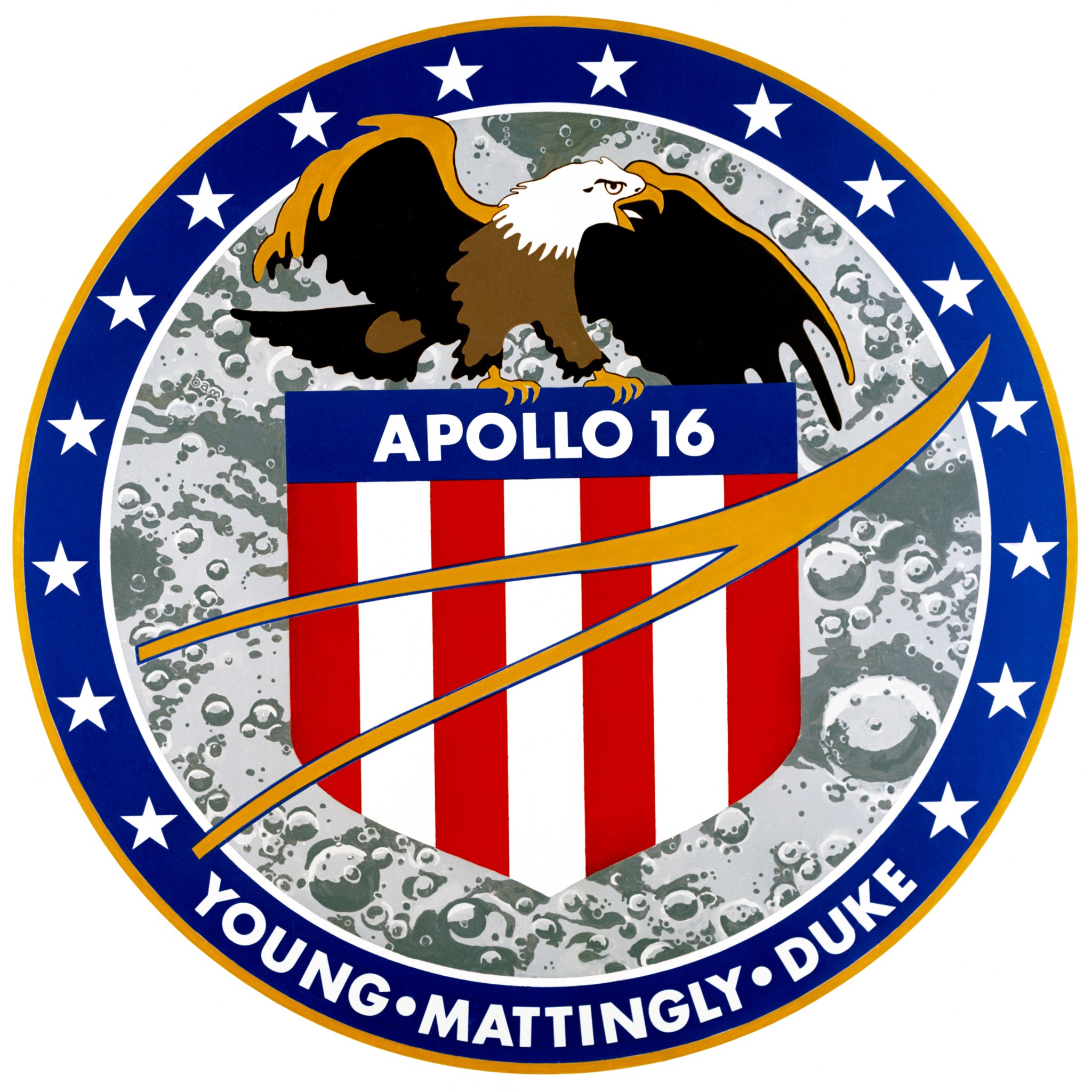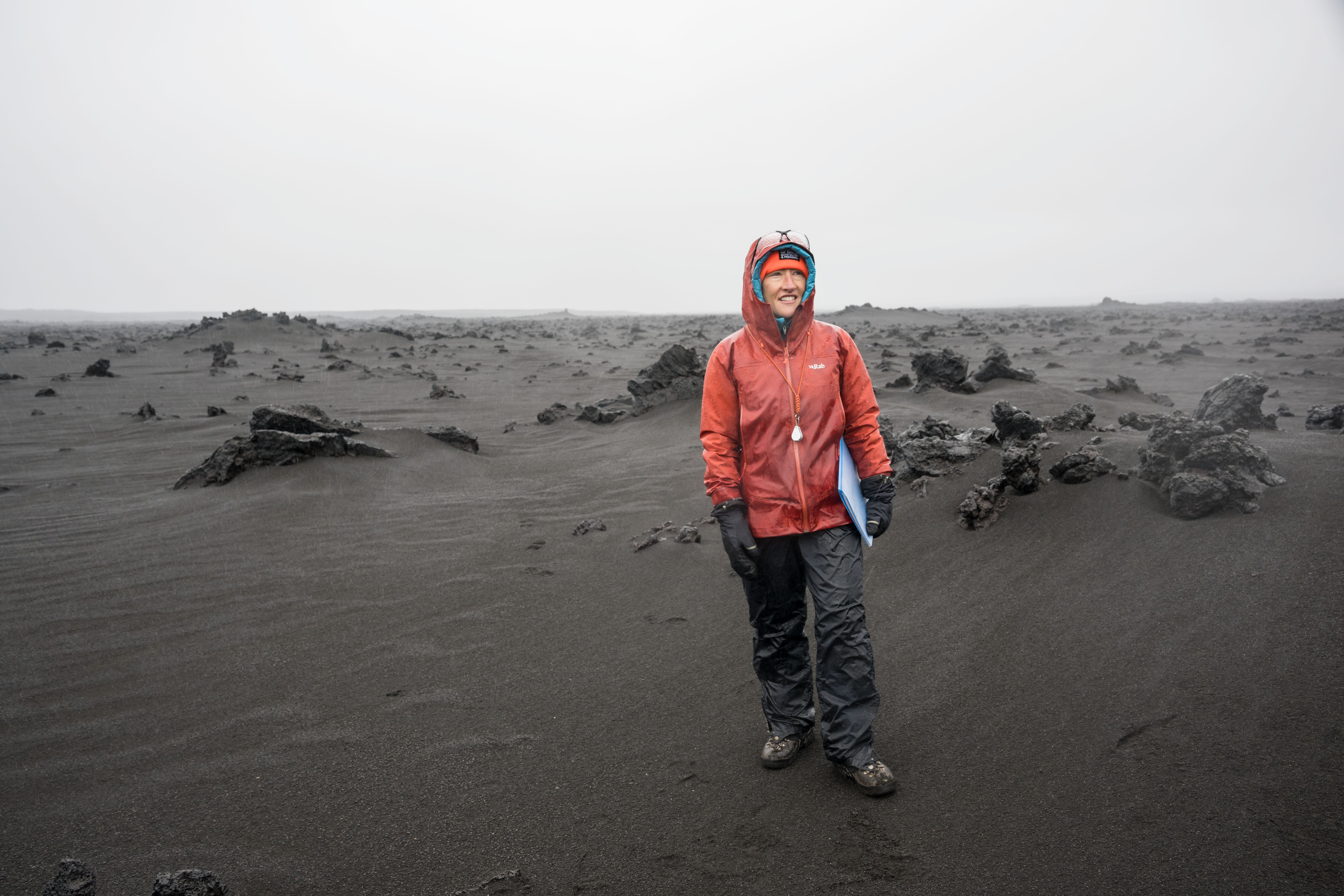Mission Objective
Three primary objectives were (1) to inspect, survey, and sample materials and surface features at a selected landing site in the Descartes region; (2) emplace and activate surface experiments; and (3) conduct in-flight experiments and photographic tasks from lunar orbit. Additional objectives included performance of experiments requiring zero gravity and engineering evaluation of spacecraft and equipment.
The Descartes landing site is in a highlands region of the moon’s southeast quadrant, characterized by hilly, grooved, furrowed terrain. It was selected as an outstanding location for sampling two volcanic constructional units of the highlands—the Cayley formation and the Kant Plateau. The Apollo Lunar Surface Experiments Package, or ALSEP, was the fourth such station to become operational after Apollos 12, 14 and 15.
Orbital science experiments were concentrated in an array of instruments and cameras in the scientific instrument module, or SIM, bay. Handheld Hasselblad 70mm still and Mauer 16mm motion cameras were used by the crew. Minor changes in surface extravehicular activity, or EVA, equipment were evaluated—a stronger clutch spring in the television camera drive mechanism to eliminate aiming problems experienced on Apollo 15, longer seat belts on the Lunar Roving Vehicle for better astronaut retention, continuous fluting of drill bits to eliminate bit binding due to extracta jamming, and the addition of a treadle and jack to aid in drill core removal from the lunar subsurface.
A significant addition to surface objectives was an ultraviolet stellar camera to return photography of the Earth and celestial regions in spectral bands not seen from Earth. Evaluation of the lunar rover through a “Grand Prix” exercise consisting of S-turns, hairpin turns and hard stops also was to be conducted. A final orbital objective was to launch a subsatellite into lunar orbit from the command and service module, or CSM, shortly before transearth injection.
The objective of the Particles and Fields, or P&F, subsatellite was to investigate the moon’s mass and gravitational variations, particle composition of space near the moon, and interaction of the moon’s magnetic field with that of Earth.
Mission Highlights
Apollo 16 lifted off at 12:54 p.m. EST April 16, 1972, from Launch Complex 39 at Kennedy Space Center in Florida. Two significant command and service module problems—one en route to the moon and one in lunar orbit—contributed to a delay in landing and a subsequent early termination of the mission by one day. An erroneous signal indicating guidance system gimbal lock during translunar coast was neutralized by real time programming change instructing the spacecraft computer to ignore input. After undocking of Casper and Orion, circularization burn of the CSM was delayed when backup circuit caused yaw oscillations of service propulsion system. Orion landing was held until engineers determined oscillations would not seriously affect CSM steering.
Lunar module, or LM, carrying John Young and Charles Duke touched down at Descartes about 276 meters northwest of planned point (8 degrees 59′ 29″S, 15 degrees 30′ 52″E) at about 9:24 p.m. EST April 20, about five hours, 43 minutes late. During 71 hours, two minutes surface stay, astronauts explored region on three EVAs totaling 20 hours, 14 minutes. First EVA included Lunar Roving Vehicle setup and ALSEP deployment. Heat flow experiment was lost when Young tripped on electronics cable, breaking it. Rover traverse took astronauts west to Flag Crater where they collected samples and photographed the area. Return drive was south of outbound track to Spook Crater where astronauts took first measurement with the lunar portable magnetometer, gathered samples, and took both panoramic and 500 mm telephotography. Just before returning to the lunar module, they deployed the solar wind composition experiment at the ALSEP site. EVA duration was about seven hours, 11 minutes with 2.5 miles driven in the rover.
Second EVA began with drive south to Stone Mountain, where surface and core samples were collected at two stations in the area of Cinco Craters, along with a trench sample, penetrometer measurements and photography. Traverse continued west, then north with stops at five additional stations for similar work. One station was deleted from the EVA plan because of time factors. Lunar portable magnetometer, or LPM, measurements were taken near Cinco. Crew returned to lunar module and ended second EVA after seven hours, 23 minutes and 6.9 miles on the rover.
Real-time flight planners deleted four stops from the third and final EVA because of time constraint in meeting ascent schedule. Astronauts drove north to North Ray Crater where “House Rock,” inside the crater rim, was sampled. Returning south, the crew stopped at “Shadow Rock” for additional sampling, photography and LPM measurement. Final stop near the LM added samples and core tubes to the collection. Last LPM readings were taken at the rover parking site along with final rock samples. Closeout, including retrieval of solar wind composition, or SWC, and film from far ultraviolet camera/spectroscope, completed EVA after five hours, 40 minutes. Rover distance was 7.1 miles.
Thomas Mattingly orbited the moon with cameras and SIM bay instruments operating during the surface stay of Young and Duke. The results verified Apollo 15 data and provided information on lunar terrain not previously covered. Lunar liftoff came on time at 8:26 p.m. EST April 23, in view of the rover television camera. After normal rendezvous and docking, and transfer of crew samples and equipment, the lunar module was jettisoned. Attitude control was lost, eliminating the usual deorbit maneuver and planned impact. Because of problems noted earlier, planners elected to return the mission one day early. During transearth coast, Mattingly took an 83-minute spacewalk to retrieve film cassettes from the SIM bay. Normal entry and landing resulted in splashdown at 0 degrees 42′ 0″ S, 156 degrees 12′ 49″ W, just before 3 p.m. EST April 27. Total mission time was 265 hours, 51 minutes, five seconds. Young and Duke collected 209 pounds of samples and drove the rover 16.6 miles.
The Particles and Fields, or P&F, subsatellite was launched at 4:56 p.m. EST April 24. The orbital shaping maneuver was deleted, and it was ejected into a highly elliptical orbit, cutting its lifetime from one year to about one month. Normal operation continued until May 29, when it impacted the moon.
Crew
John W. Young, Commander
Charles M. Duke Jr., Lunar Module Pilot
Thomas K. Mattingly II, Command Module Pilot
Backup Crew
Fred Haise, Commander
Edgar D. Mitchell, Lunar Module Pilot
Stuart A. Roosa, Command Module Pilot
Payload
Casper (CM-113)
Orion (LM-11)
Prelaunch Milestones
7/1/70 – S-IVB ondock at Kennedy
9/17/71 – S-IC ondock at Kennedy
9/29/70 – S-IU ondock at Kennedy
9/30/70 – S-II ondock at Kennedy
Launch
April 16, 1972; 12:54:00:567 p.m. EST
Launch Pad 39A
Saturn-V SA-511
High Bay 3
Mobile Launcher Platform-3
Firing Room 1
Orbit
Altitude: 107.5 miles
Inclination: 32.54 degrees
Orbits: 64 revolutions
Duration: 11 days, one hour, 51 minutes
Surface Time: 71:02:13
Distance: 1,391,550 miles
Lunar Location: Descartes Highlands
Lunar Coordinates: 8.97 degrees south, 15.51 degrees east
Landing
April 27, 1972
Pacific Ocean
Recovery Ship: USS Ticonderoga






























